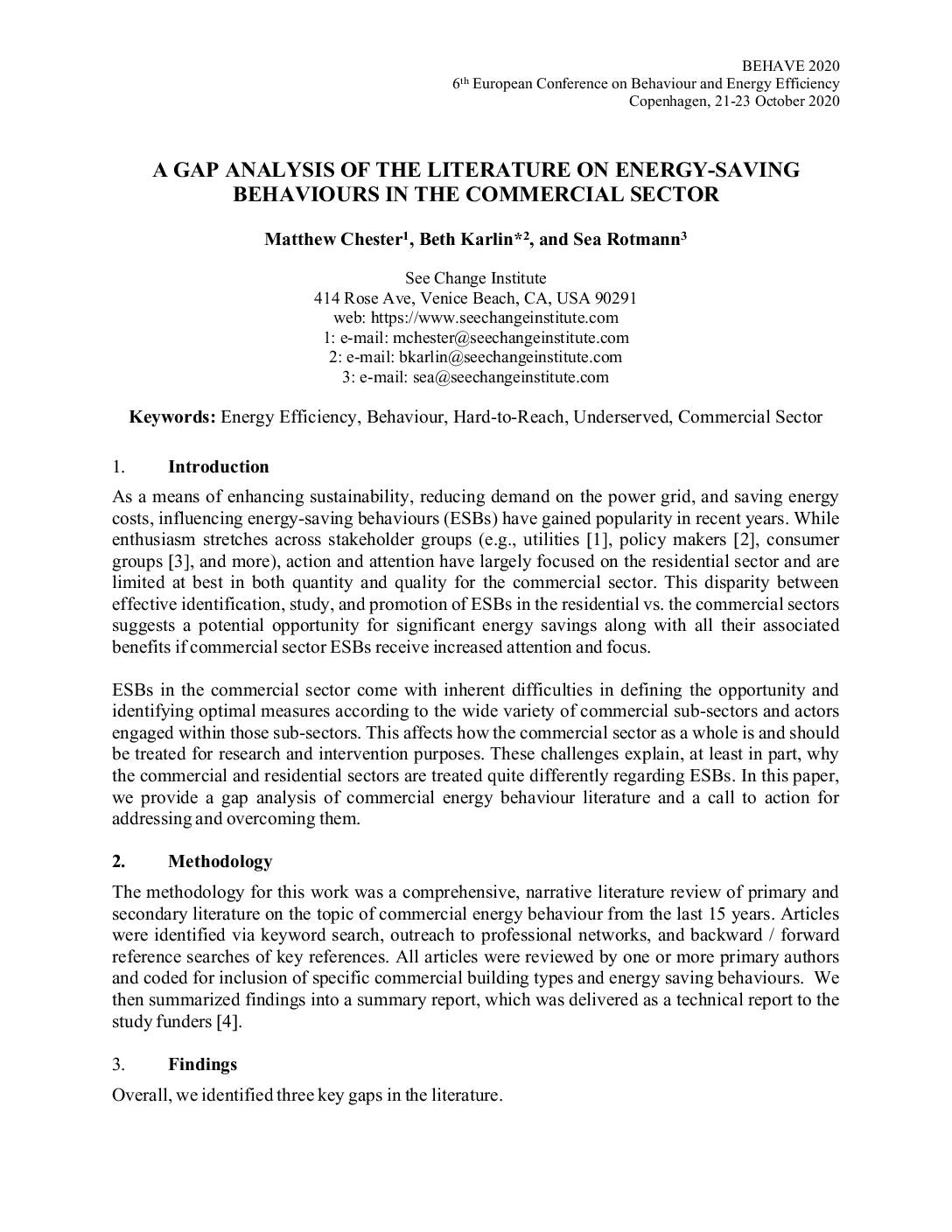As a means of enhancing sustainability, reducing demand on the power grid, and saving energy costs, influencing energy-saving behaviours (ESBs) have gained popularity in recent years. While enthusiasm stretches across stakeholder groups (e.g., utilities [1], policy makers [2], consumer groups [3], and more), action and attention have largely focused on the residential sector and are limited at best in both quantity and quality for the commercial sector. This disparity between effective identification, study, and promotion of ESBs in the residential vs. the commercial sectors suggests a potential opportunity for significant energy savings along with all their associated benefits if commercial sector ESBs receive increased attention and focus.
ESBs in the commercial sector come with inherent difficulties in defining the opportunity and identifying optimal measures according to the wide variety of commercial sub-sectors and actors engaged within those sub-sectors. This affects how the commercial sector as a whole is and should be treated for research and intervention purposes. These challenges explain, at least in part, why the commercial and residential sectors are treated quite differently regarding ESBs. In this paper, we provide a gap analysis of commercial energy behaviour literature and a call to action for addressing and overcoming them.
Download sourceShare this

Sectors: Cross cutting, Power sector
Country / Region: Global
Tags: economic cost, energy, energy savings, energy utilities, grids, paper production, projects, promotions, stakeholders, sustainabilityIn 1 user collection: Session 2b: Behavioural insights for end-use energy efficiency in buildings
Knowledge Object: Publication / Report
Publishing year: 2020
Author: Matthew Chester, Beth Karlin, Sea Rotmann
Content:



